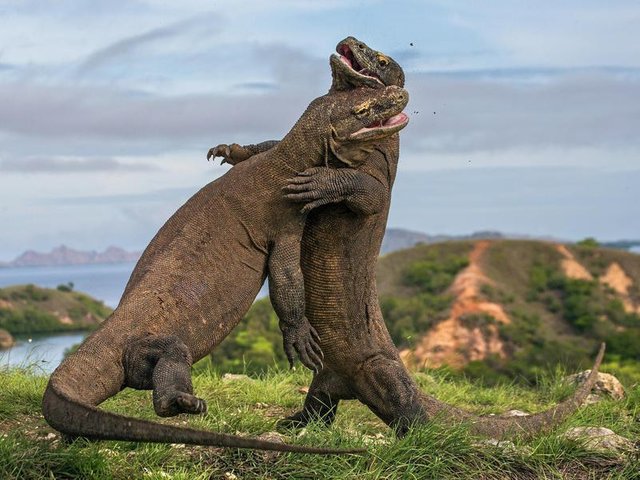Extraordinary Prehistoric Animals which you can see
There are some of Prehistoric Animal which you can see. Some of these animals can only be found in zoos and protected nature preserves because their populations are starting to fall, or they are already endangered. Others can still be found in the wild — and maybe even in your own backyard.
Wherever you see them, these ancient animals — some of which might surprise you — are sure to inspire wonder.
Gharial
All crocodiles, caimans and alligators are ancient species, and they look the part. But one species of crocodilian — the gharial, sometimes called a gavial — beats them all in the prehistoric-looking beauty contest. Gharials have long, narrow, sword-like mouths full of buzzy teeth. Males develop a huge bulbous nose at the end of their snout, making them look rather comical.
Gharials in some form or another have been around for tens of millions of years, but the modern gharial is the last remaining species of this lineage. Alas, it too is heading towards extinction, with fewer than 200 individual reproducing gharials left in the wilds of India, Bangladesh and Pakistan. The IUCN has listed it as a “critically endangered” species.

Komodo Dragon
You can find Komodo dragons in Indonesia today, but that might not be where these iconic lizards came from originally. Scientists recently unearthed a series of Komodo dragon fossils in eastern Australia dating back as far as four million years ago.
These gigantic lizards can weigh as much (or more) than a human — and, in fact, they have been known to attack humans. Which is not ideal, since these giant reptiles are somewhat venomous.
However, if you want see Komodo dragons by booking with one of several outfitters leading excursions to Komodo National Park. The small Indonesian islands that make up this park are stunning, and offer many amenities for curious tourists.
Shoebill Stork
No one’s quite sure how the shoebill stork is related to other birds since different collections of data point to different living relatives, but one thing scientists agree on is that this is a very, very old bird. And it looks the part: Grayish and big-beaked, it looks like it walked right off the set of "The Flintstones.”
Shoebill storks are classified as “vulnerable to extinction” due to habitat destruction and poaching. But you can still see them in a protected area of the Mabamba Bay Wetland in Uganda, 
Bactrian Camel

You already know about the one-humped camels used as transport in the Middle East before automobiles existed. But did you know that they evolved from the two-humped bactrian camel, which still roams the wilds of the Gobi Desert in Mongolia?
Bactrian camels — which sort of look like a cross between Chewbacca and a llama — evolved to withstand temperatures below 0°F and above 100°F some two million years ago. Its two humps are used to store fat, which the camel breaks down into energy and water to sustain it during long, dry, food-free periods (if only we could lose fat that easily too).
Bactrian camels are critically endangered in the wild, with fewer than 1,000 left, according to the IUCN. However, domesticated bactrian camels are an important part of Mongolian culture, and numerous tour operators offer camel-riding expeditions. In addition, visitors can check out the annual Thousand Camels Festival, held in early March in Umnugovi, Mongolia.
Echidna
![d4ce5e92106e4a57b53eaf47edb03dda.jpg]
( )
)
These animals can also be hard to find in the wild, since they’re small, mostly nocturnal, and live a spaced-out and solitary life. Several species of echidna are also highly endangered — a sad fact, considering that these animals have been roaming the earth for an estimated 17 or so million years.
If you want to see a live echidna up close, your best bet is to visit one of the many zoos throughout New Zealand, Tasmania and Australia
This information is collected from https://www.farandwide.com/
sorry @monukumar95 i am not a robot i voteup your blog,i love wild animals .your pictures are beautiful and clear.i truly love your blog ,thank you for sharing .i sign up yesterday ,i m inviting you to my page to check out my blog ,please leave a comment or voteup
thanks
Great blog of alogetor
thanks
We are very lucky to see them. But conservation is the key so that they can survive and doesn't become a thing of the past like Dinosaurs and Mammoths.
ya you are right bro this is main concern
Beautiful pic &animals
thanks
Looking very dangerous
Nice blog